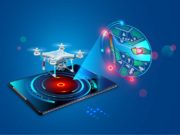
Dubai, London, Singapore, Frankfurt, Newark. This is just a partial list of the major airports where operations have been disrupted in the past several months because of reports ranging from drone sightings to coordinated “attacks” by unidentified groups or individuals intent on using drones to create havoc. The U.S. Federal Aviation Administration (FAA) says reports of drone sightings have increased dramatically over the past two years, and that it now receives more than 100 such reports each month.
What is frustrating for drone manufacturers, associations and operators, as well as traditional aviation stakeholders, it that many, if not most, of these reports are unfounded or unconfirmed. In mid-2018, the U.S. Government Accountability Office released a report that, in describing the data collected by FAA on several types of safety events involving small drones, said “the accuracy and completeness of the data are questionable.”
FAA and other international regulatory bodies are in a difficult position. They don’t want to discourage reporting of potentially unsafe conditions, and at the same time, they don’t want expend safety resources, tax law enforcement and security agencies, and inconvenience travelers and shippers because of “possible” drone activity.
That is one of the reasons that remote identification of drones is crucial.
Soon, perhaps this month, FAA is expected to issue its much-anticipated notice of proposed rulemaking (NPRM) that would lay out requirements on the remote identification of drones. As far as we are concerned, it cannot happen soon enough. (Editor’s note: Shortly after this article was published, the U.S. Department of Transportation delayed release of the NPRM until December.)
Remote identification, or remote ID for short, is the ability of a drone in flight to provide identification information that can be received by other parties. The drone industry and its supporters see issuance of the rule as a key next step in in the development of drones and their integration into the National Airspace System (NAS) in that the rule will help pave the way for more advanced commercial drone operations, such as those that are conducted at night and over people. In June, then-acting FAA Administrator Dan Elwell described remote ID as “the gateway to beyond visual line-of-sight operations” and the backbone of drone traffic management. In the future, he said, remote ID will be “what makes urban air mobility possible.”
From a safety and security perspective, remote ID will introduce greater operator accountability because FAA, security and law enforcement agencies will be able to identify the operators of drones flying in their jurisdictions. We assume that most operators intend to fly their drones safely and in compliance with applicable regulations, but in situations in which that is not the case, such as when a drone is operating in restricted airspace near an airport, remote ID will aid in enforcement.
Remote ID and the related data that are collected also should help paint a realistic picture of drone activity ─ of which drones are being operated in accordance with regulations and which are not.
Of course, the idea of required information being broadcast by a drone, or otherwise electronically collected, has raised privacy concerns, particularly when it comes to potentially sensitive business operations. It is easy to see why some commercial operators might not want their competitors to know where they are operating their drones, but the safety of the traveling public and others using the NAS is paramount.
The Foundation strongly believes that remote ID should be implemented as soon as possible and that international regulators should work together to establish a global standard.

